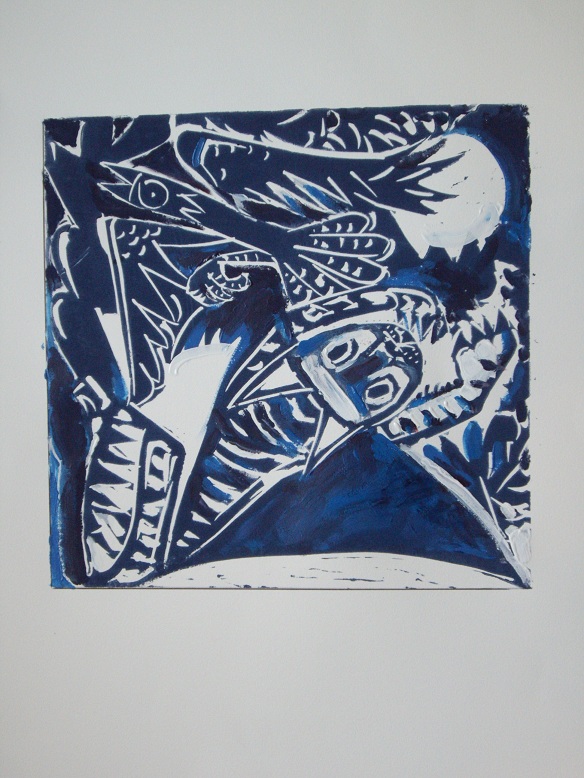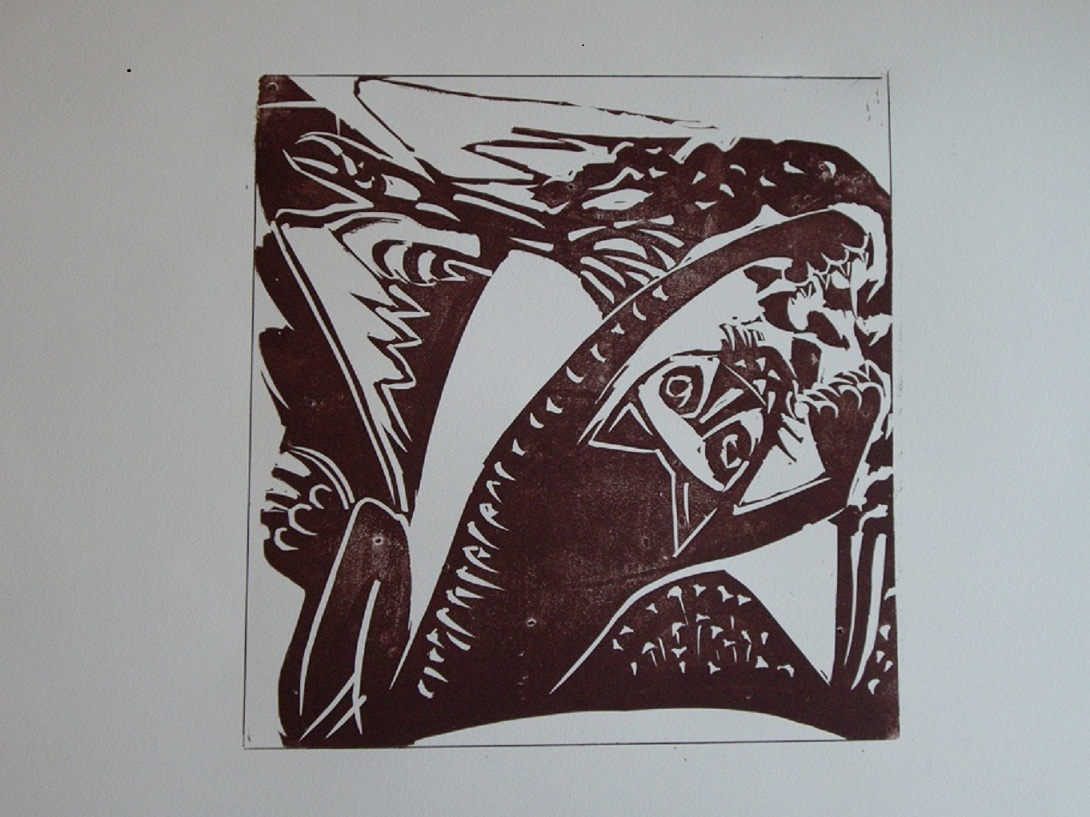PROFESSOR LEANDER S. HUGHES
ON THE ALPHASEER
More than a decade has passed since I first met Ben Lau, but I remember the occasion well. I was a student at the Rudy and Lola Perpich Center for Arts Education, and Ben was a special guest at our school, invited to present before our entire student body. Things got off to a rocky start when Ben put a black and white copy of a Cezanne and one of a Pissarro side by side on the overhead and asked the audience which was a better composition. Ben never had a chance to move forward from this initial question, as students around me jumped up in protest: “How can you say one work of art is better than another?!†one student shouted, “It’s just your opinion!†Soon the hall was consumed in chaos with students interrupting Ben, talking over each other in their self-righteous tirade against this apparent act of artistic discrimination. For all of their talk about equality and mutual understanding, my classmates showed themselves to be thoroughly bigoted in their refusal to even allow Ben to explain himself. So, the first time I ever spoke to Ben was when I went up to him that day to apologize for the rude treatment he had received and to tell him that I would have liked to hear what he had to say. A year later, Ben came back to our school offering to be a mentor to anyone interested. I applied straight away, and Ben has been a mentor and good friend to me ever since.
There was no sudden enlightenment studying under Ben. I was a very skeptical student in the beginning. I did not see the beauty in his work. In fact, I did not see beauty in anyone’s work, including my own. Sometimes I liked a painting because it got me fantasizing or philosophizing about this or that, but my ability to take pleasure in something at a purely visual level was close to nil. Gradually though, over countless Saturday afternoons spent with Ben looking at the paintings in his many art books- engaging with Titian, Hals, Matisse, Van Eyck, Hokusai, and Knox Martin to name just a few- I began to feel something in those works: the way the dark and light embraced and intertwined, the energy and certainty of the brush strokes. Slowly, I began to taste, if ever so slightly, the dynamism and vitality of those great compositions, and in time, my appreciation went deeper- to a level which may well be impossible to explain: when a painter takes something essential to the human experience and reinvents it in the two-dimensional space of a canvas, letting the power of that thing guide each line and tap out the rhythmic dance of dark and light, then that painting becomes a thing onto itself- a small universe into which we can step and exist indefinitely, if we wish, simply by giving it our full attention. If this isn’t Beauty with a capital “B,†then it is at least one very important kind of beauty- one that has added immeasurable richness to my life and one that is clearly present in some paintings more than others.
Ben has a website at www.thealphaseer.com upon which he refers to himself as the Alphaseer- I laughed when I first read this self-bestowed title, but the title is not a product of an enflamed ego: Rather it is an honest appraisal of Ben’s own ability. Ben could see Beauty (yes, I think it deserves a capital “Bâ€), whereas my art school classmates and I could not. Now thanks to Ben’s mentorship, I too can catch a glimpse into Beauty’s secret chambers, and for this I am truly grateful, but Ben remains light-years ahead of me- he can actually CREATE Beauty consistently with every new work he produces. Thus, I think “Alphaseer†may actually be a shade too modest- Ben, to me, is the Alphacreator: he creates Beauty on a daily basis and that Beauty is a gift to everyone willing to take the time to really see it. If I had the money to be Ben’s patron, I would buy up all of his work in an instant- not because doing so would be a wise investment (as it surely would be), but just so I could surround myself in the timelessness of his art. For now though, I can only offer this humble endorsement along with my heartfelt thanks to Ben and my hope that, in some small way, I may help bring to him the wider recognition he so deeply deserves.
Professor Leander s. Hughes is currently teaching at Saitama University, Japan.
*********************************************************************************************
Lee,
That was a beautiful statement, Lee, thank you for writing with such
heartfelt honesty. It’s always good to hear about my dad’s work from
someone else. Growing up in a household where I’m constantly
surrounded by these works and where the Alphacreator is also my dad
(you know how that is), I often take for granted my seemingly
effortless ability to discern Beauty from non-beauty – but I realize
time and again it is only because my dad raised me this way, so that
seeing art is like a native language.
I hope this can be published some day.
Love,
Isabella
Isabella is the daughter of Ben Lau, a.k.a. the Alpha Seer
|
show details Dec 6 (2 days ago)
|
This is so Beautiful and so true, Ben. Â I remember the first time I met you … and that day very well. Â Thank you for sharing this. Â Karen
Karen M. is the lady who, in Leander Hughes’ youth had brought about the meeting of the latter and the Alpha Seer.



